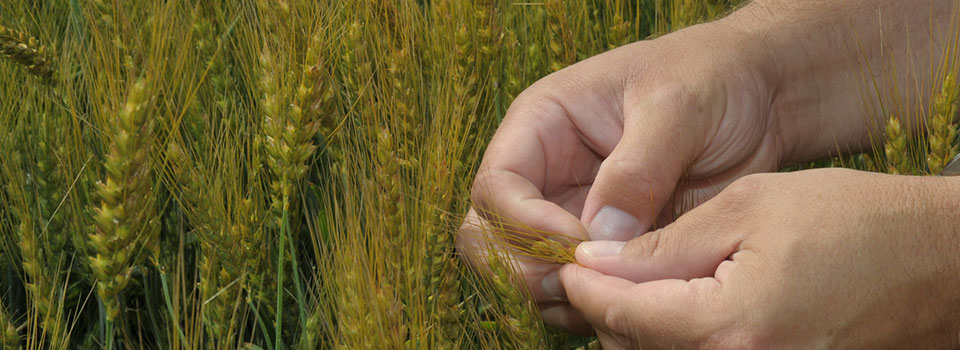The wheat streak mosaic virus, transmitted by wheat curl mites that reside in volunteer wheat, poses problems for producers and requires thorough management, according to Kansas State University wheat disease specialist Kelsey Andersen Onofre.
“They kind of are this family of viruses that are vectored by a tiny mite that we call the wheat curl mite. They all cause really similar symptoms. They cause some yellow and green streaking in our wheat plants. This is really a disease that can be a big problem,” she said.
The wheat streak mosaic virus family consists of wheat streak mosaic, Triticum mosaic and High plains wheat mosaic viruses.
Volunteer wheat, or wheat leftover from past crops, houses the wheat curl mite. Mite populations, ultimately, depend on the amount of volunteer wheat within an area.
“If you had some wheat in a neighboring field that survived after harvest, or maybe it was hidden in some double crop field nearby, that’s where those curl mites survive. They can then blow into your field in either the fall or the early spring and that’s typically when we start to see damage,” Onofre said.
Onofre highlights an avenue for initial identification of wheat streak mosaic. Producers can have wheat samples tested at the K-State plant pathology diagnostic laboratory for official results.
“You get kind of a fan appearance, so it kind of is worse on the edge of the field and gets progressively better as you move towards the center of the field,” she said.
If a producer identifies wheat streak mosaic within their wheat crop, Onofre suggests they evaluate the potential crop yield. To determine proper crop yield, refer to the Kansas Wheat Variety Guide.
“If you see the symptoms in the fall or the early spring, you’re probably going to see more yield loss in that part of the field,” she said.
Warm weather conditions induce the appearance of wheat streak mosaic within fields. While plants may be infected during the winter and times of cold, hot temperatures activate the viruses’ symptoms.
“Usually, we don’t see that streaking symptom until the weather starts to warm, so we can have some infection cooking there over the winter,” Onofre said.
Increased moisture and other weather events during the 2023 harvest contributed to more volunteer wheat and desirable conditions for the wheat streak mosaic virus to thrive in the current growing season.
“We had some unfortunate rainfall right around harvest, so that kept wheat in the field a little longer than we might have wanted to see it. We could have had some shattering or some volunteer from that wheat being left,” Onofre said. “We also had hail, so there were swaths of hail that came in prior to harvest. That hail knocked that wheat right out of the plant and that will cause some volunteer to emerge.”
Other wheat diseases that experts encourage Kansas growers to watch for include wheat soilborne mosaic virus, wheat spindle streak mosaic virus, barley yellow dwarf and stripe rust. More information is available at local extension offices in Kansas.


